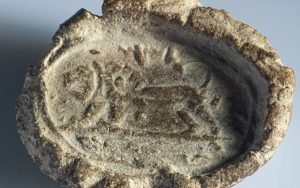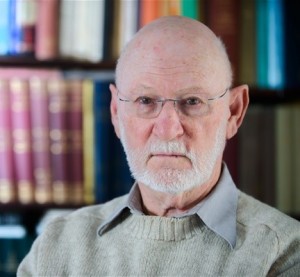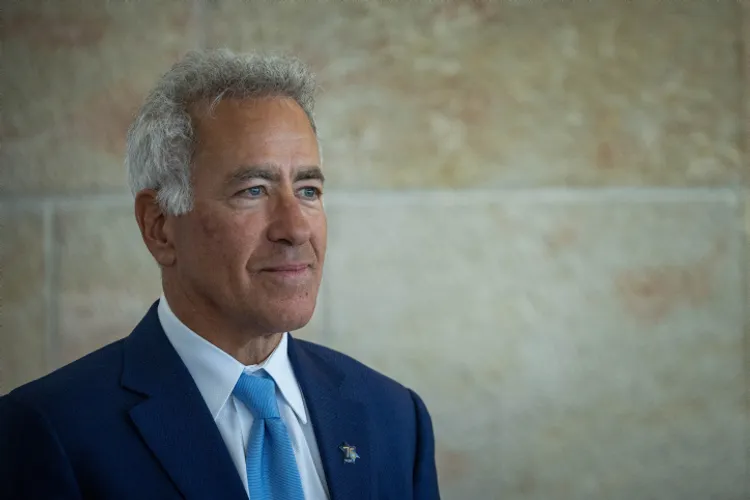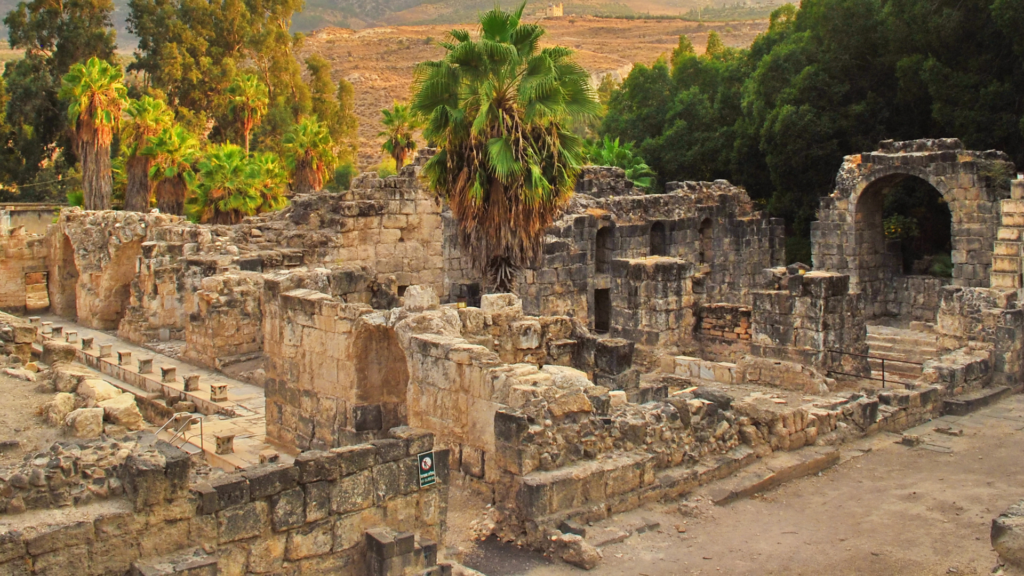
Israel’s Oldest Inscribed Seal Sold for a Steal
Israel’s Oldest Inscribed Seal Sold for a Steal
December 14, 2020
The Times of Israel — What is arguably the earliest inscribed clay seal impression from the Land of Israel — used at the court of Israelite King Jeroboam II — has been authenticated after years of strict laboratory testing under the supervision of Ben-Gurion University Prof. Yuval Goren, a professor in the Department of Bible, Archaeology and Ancient Near Eastern Studies.

Prof. Yuval Goren
“This bulla is one of the earliest, if not the earliest, inscribed bulla in the Land of Israel,” Goren tells The Times of Israel.
The inscribed clay, known as a bulla, was purchased without provenance from a Bedouin antiquities merchant in the 1980s and is now thought to be from Jeroboam II’s 8th century BCE reign.

27,000 Year Old Clay Sealing
The newly authenticated seal impression is adorned by a roaring lion that stands with his tail raised, over which is a paleo-Hebrew inscription, “l’Shema eved Yerov’am” (Belonging to Shema the servant/minister of Jeroboam). Jeroboam II is historically understood to have ruled from 788 BCE to 748 BCE.
The bulla has only a partial impression of the inscription, but Goren said it is clearly the same as what was incised on the jasper seal. The fact that the royal seal came in varied sizes is noteworthy and novel to this study.
Goren told The Times of Israel that he became aware of the seal impression over 10 years ago. It had been purchased from a Bedouin market near Beer-Sheva by Yigal Ronen, a former professor of nuclear engineering and a certified antiquities collector, for a mere 10 old Israeli shekels in the 1980s, equivalent to a few cents.
Because of the extremely strange circumstances and inexpensive price, Ronen initially disregarded the possibility that the small, 23.4 millimeter (1 inch) by 19.3 mm (.75 inch) bulla could be authentic, and thought it a clever forgery or replica, said Goren.
About five years ago, the secret in-depth testing of the seal impression began, Goren said. It followed a protocol he had forged over the past decade, which includes a series of overlapping tests from varied scientific disciplines.
Using this testing protocol, Goren has provided expert testimony in high-profile cases of alleged forgery, such as the James Ossuary trial. He has analyzed numerous seals for the Israel Police and the Israel Antiquities Authority, he said.

Prof. Shmuel Ahituv
Among the researchers who participated in the new sealing study were Ben-Gurion University epigrapher and Emeritus Professor of Bible and Ancient Near Eastern Studies, Prof. Shmuel Ahituv (pictured), geologists Dr. Avner Ayalon and Dr. Mira Bar-Matthews from the Geological Survey of Israel, and IAA archaeologist Orit Shamir, who specializes in textiles.
The impetus for the testing of the new bulla came after Ronen’s friend and neighbor, the archaeologist and Ben-Gurion University Professor Emeritus Eliezar Oren had repeatedly visited Ronen’s collection. Oren, the founder of Ben-Gurion University’s archaeology program, suspected the sealing was indeed from the Iron Age and urged the Ronen family to give permission for high-tech testing.
Goren said he agreed to oversee the procedures completed by his laboratory and those of an interdisciplinary team of scientists — on the condition that the artifact be turned over to the Israel Antiquities Authority if authenticated. (Spoiler: The bulla will shortly make its way to the IAA.)



